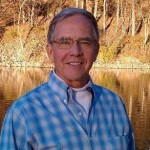
Smart Local Investors Do Well and Do Good
Read the original article in the Salisbury Post HERE.
I love it when I find examples of places where one can do well while doing good.
This phrase describes situations where you can invest money or talent, earn a handsome rate of return or a decent living and make the world a better place for your kids — all at once. Sort of like making a charitable donation, but in addition to doing good, you also do well — you get richer.
If you took $1,000 and invested it in a certificate of deposit in any of the three largest banks in America today, you would earn 1 percent or less on your money, and you’d have to pay income tax on that gain.
Take the same $1,000 and put it in a government-issued bond mutual fund, and your rate of return might get as high as 2 percent in today’s market.
But if you invested in your own community, you could earn an after-tax rate of return of between 5 and 7 percent (up to three times as much). The story actually starts with the John Deere Corp. several years ago.
In the windy Great Plains, new wind power was the first renewable energy source to become competitive with a newly constructed coal or nuclear plant. Farmers were approached by investors who wanted to lease farmland to locate windmills on, while letting the farmer continue to farm around the towers, much as they do around electric distribution towers. Once they understood the economics of the proposed deal, the farmers wanted to invest, too. Long familiar with John Deere as a seller and financier of large farm equipment, the farmers approached the company and asked to borrow money to invest in wind farms.
John Deere investigated the projects, concluded they would be profitable and could grant a measure of economic security to their farmer customer base. The farmers also would likely use some of their profit to buy new farm equipment from Deere. John Deere agreed to become a third-party investor in renewable energy, and an industry was born.
The model also works in urban areas, where not-for-profits such as schools and libraries can capitalize on the sunshine on their rooftops. These institutions have been at a disadvantage trying to install renewable energy because incentives enjoyed by for-profit utilities were not available to them. Under the old thinking, when the taxpayer-supported school system paid the light bill, it was higher than it needed to be.
Building on the John Deere experience, entrepreneurs have now figured out that they can set up limited partnerships where local folks invest in local projects. These investments now work under the same tax code rules that the public utilities have — and can be just as profitable. These local for-profit limited partnerships buy solar, wind and geothermal energy equipment and place it at public schools, libraries, jails and other public buildings.
The terms of the deal typically involve the school or library leasing its rooftop to the investor group for a period of years. The private, for-profit investors earn a handsome rate of return for five or six years and then donate the system to the not-for-profit or public entity, which then enjoys significantly reduced energy bills for the remaining 25 or so years of the project. Both parties win. In addition, the pollution-free energy benefits public health.
Another source of pride for this neighborhood of investors is that the local economy also wins big, because the skilled labor needed to install this equipment can be another homegrown small business, not located in some distant coal mine or on a well drilling rig in the middle of the ocean.
Several companies exist that are putting these ideas into action. On the west coast, SolarMosaic has so successfully matched investors with local projects that they have been favorably reviewed by Bloomberg Press, the Wall Street Journal, the New York Times and Fortune.
A second example is the Appalachian Institute for Renewable Energy (AIRE), located in Boone. Using startup money from the Kendeda Fund that supported two years worth of preparation, AIRE has developed legal templates and economic calculations that allow local investors to form for-profit businesses that develop community renewable energy for nonprofits, civic organizations, churches and municipalities. Working with what they call “empathetic investors,” they have several prototype projects successfully completed and are now eagerly seeking new projects.
So, if you are scared of Wall Street, tired of paying high taxes, want to create local employment and help clean up the environment — all the while earning a great rate of return — you have reason to be optimistic about our future. Pick up the phone, call one of these organizations and put your money where your heart is.
Francis P. Koster lives in Kannapolis. His “Optimistic Futurist” column appears every other Sunday in the Salisbury Post. For more information, visit www.TheOptimisticFuturist.org.
